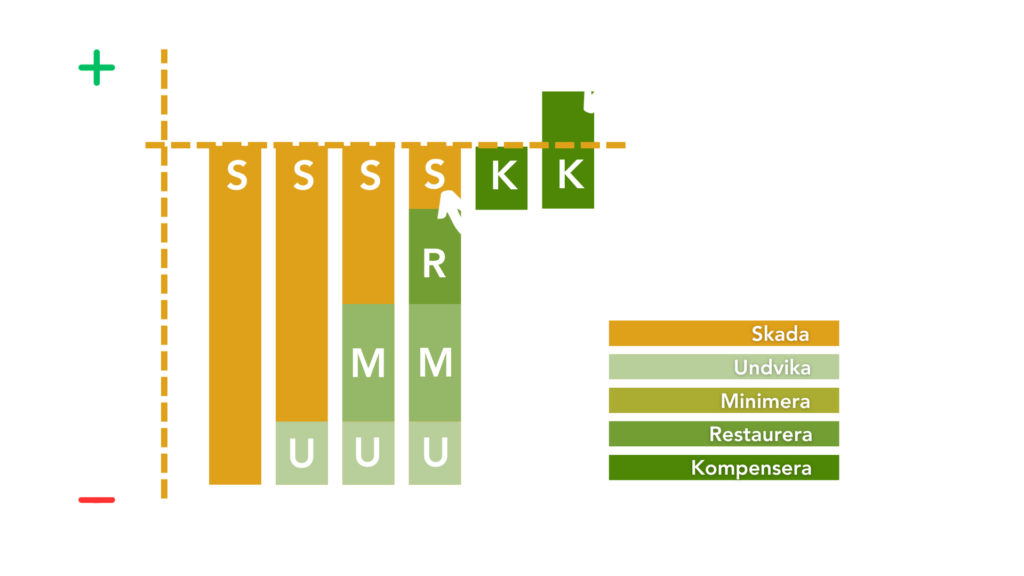
Method
The main method development has taken place in a dedicated expert team from Ecogain in close collaboration with the project’s Advisory Board, a group of prominent researchers and people with specialist skills.
The group has worked iteratively to develop the CLIMB calculation method with predefined parameters that are adapted to conditions in Swedish and Nordic nature. The method is based on the British Defra Biodiversity Metric 3.0.
The mitigation hierarchy is an internationally accepted methodology and guideline for the considerate management of biodiversity in various development projects.
Working according to the mitigation hierarchy means:
- Step 1: Avoid impacts and adapt the project, perhaps with a different location.
- Step 2: Where nature will still be adversely affected, minimize the impact as far as possible.
- Step 3: Build nature restoration into the project.
- Step 4: Offset for and balance any remaining loss of nature that still occurs despite steps 1-3.
Offsetting can be done elsewhere and may even contribute to an overall, net positive impact.
CLIMB is the tool that enables the calculations in all parts of the mitigation hierarchy.

Facts about the method
The complete CLIMB calculation includes:
- Description of prerequisites for collecting biodiversity data
- Documentation of concepts and various parameters for calculation
- Description of dependencies to SIS standardizations
- Definition of useful Key Performance Indicators (KPIs) adapted to different use cases
- User manual and technical description
Since the end of the project in September 2023, the model is available to be further tested, evaluated and applied in widely different nature and land use areas throughout Sweden.
Model development & scientific anchoring
CLIMB has been developed in close collaboration and dialogue between the model development team and the project’s Advisory Board.
The purpose of the Advisory Board (autumn 2022 – spring 2023) was to form a forum for knowledge exchange between academia and business, in connection with the development of CLIMB.
The discussions with the Advisory Board provided valuable support in the development of the most challenging parts of the calculation as well as in the bridging between the scientific basis and the business’ need to rapidly develop an applicable tool.